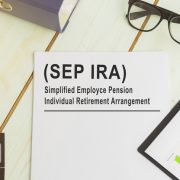Real Estate in Recovery, but With Room to Run
 It’s been a rough six-year stretch. But it looks like the real estate sector is finally well on the road to recovery.
It’s been a rough six-year stretch. But it looks like the real estate sector is finally well on the road to recovery.
We’ve seen a broad increase in average home prices in almost every major market across the country over the last 18 months or so. A slowly improving credit market, some very slow but fairly consistent hiring numbers and gradually recovering wages are feeding into a nationwide and even global real estate recovery.
That said, prices are still well below their peak levels. The Case-Shiller House Price Index indicates that house prices have recovered about 50 percent of the way from the trough to the (overvalued) peak levels of 2006-2007.
Furthermore, of the approximately 350 metro markets nationwide, 59 have returned to or exceeded their last normal levels of economic and housing activity. Which suggests that we have some room to run left, in some of these markets that have been lagging.
The best opportunities won’t be going to the indexers and the mutual fund holders, though – who can, in the aggregate – get only average returns at best.
Instead, the best opportunities in the real estate recovery are going to go to those who are the most successful at identifying and purchasing homes selling at a substantial discount to market value.
Think about it: If you buy a broad REIT open-end index fund and stick it in your IRA (thereby sheltering that nice REIT income from federal taxes, at least until you retire), you will be buying real estate right about at its current aggregate market value, by definition. You may be able to get a bit of a discount using closed-end funds, which usually sell at a modest discount to their net asset values. But those discounts are puny compared to the discounts that successful and experienced Self-Directed IRA real estate investors can get by placing their bets carefully, finding motivated sellers, and identifying ways to add value to individual properties. It’s not unusual for these investors to find homes and other properties selling at 20, 30 and sometimes 50 percent off.
This is the key to market-beating returns, in the long-run, and across all asset classes. Warren Buffett has bought almost every asset class under the sun at one time or another, and he’ll tell you the same thing: Look for opportunities to buy at discounts to intrinsic value.
Real estate, of course, is no different. And it doesn’t matter what your strategy is. Are you a fix-and-flipper? Your returns, in the long run, will depend on your ability to buy homes at an attractive price from motivated sellers. Only then can you reliably add value to bring your property back to the mean.
Are you a long-term, buy-and-hold rental income investor? Buying at a discount will increase your cash-on-cash yields substantially, compared to buying the same property at full price.
In many ways, the Self-Directed IRA is an ideal place for you to hold real estate assets: Real estate investing frequently generates substantial streams of rental income, which you may want to defer (using a traditional IRA) or allow to compound tax free, which you may be able to do using a Roth account, provided you meet the income requirements for eligibility.
Furthermore, you can increase your potential overall return using leverage within your Self-Directed IRA, under certain conditions. (Note: Using leverage could expose your IRA to a special tax on unrelated debt income. Consult your tax advisor for more information).
You can also self-direct other accounts, such as Simplified Employee Pension Plans (SEP), SIMPLE IRAs, Solo 401(k)s, and even Health Savings Accounts!
If you are an experienced real estate investor, or otherwise curious to learn more, you won’t want to miss our upcoming seminars on Getting Started in Self-Directed IRA Real Estate Investing.
Indeed, you won’t want to get started without us!
Image by: www.presentermedia.com




